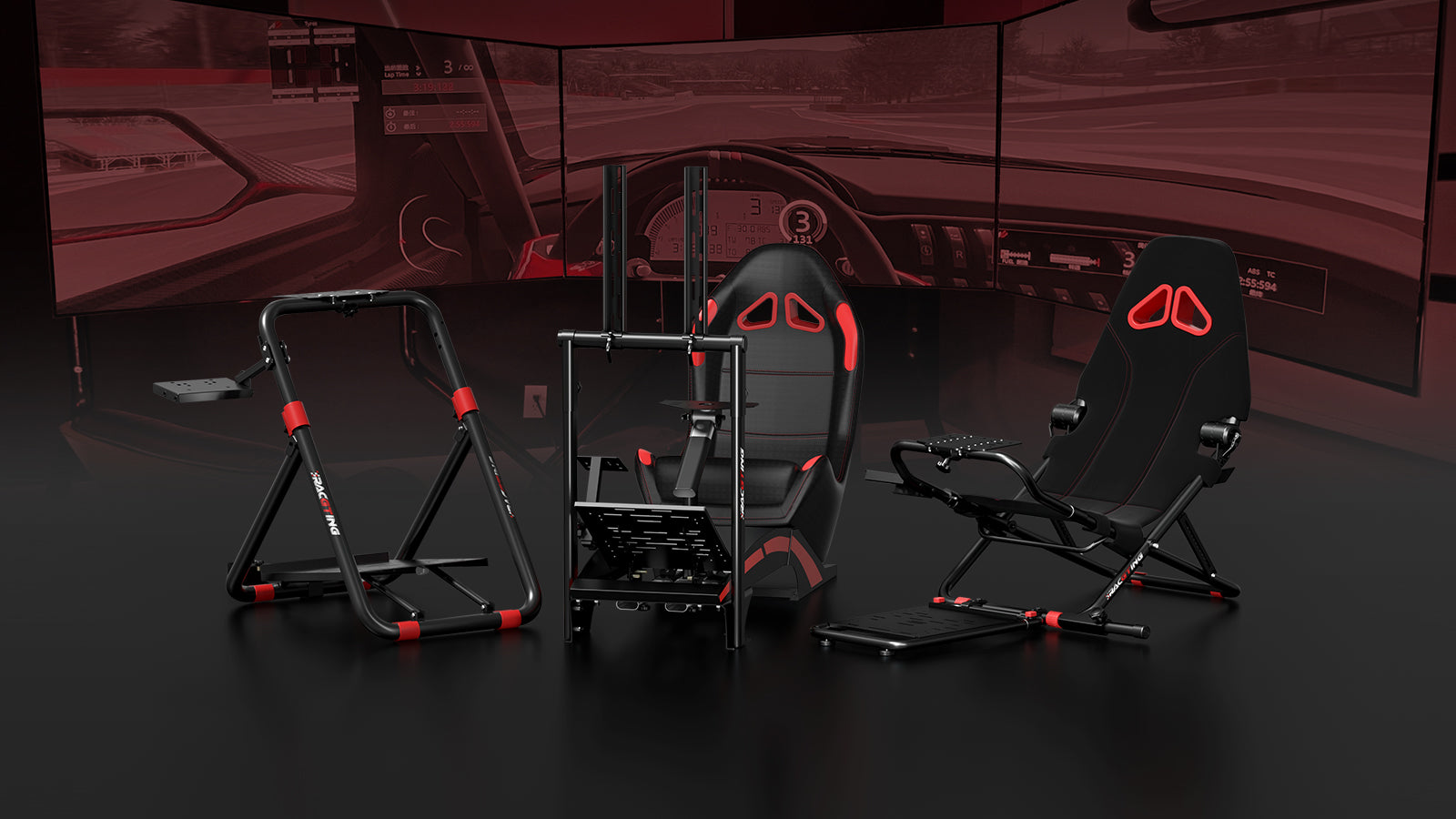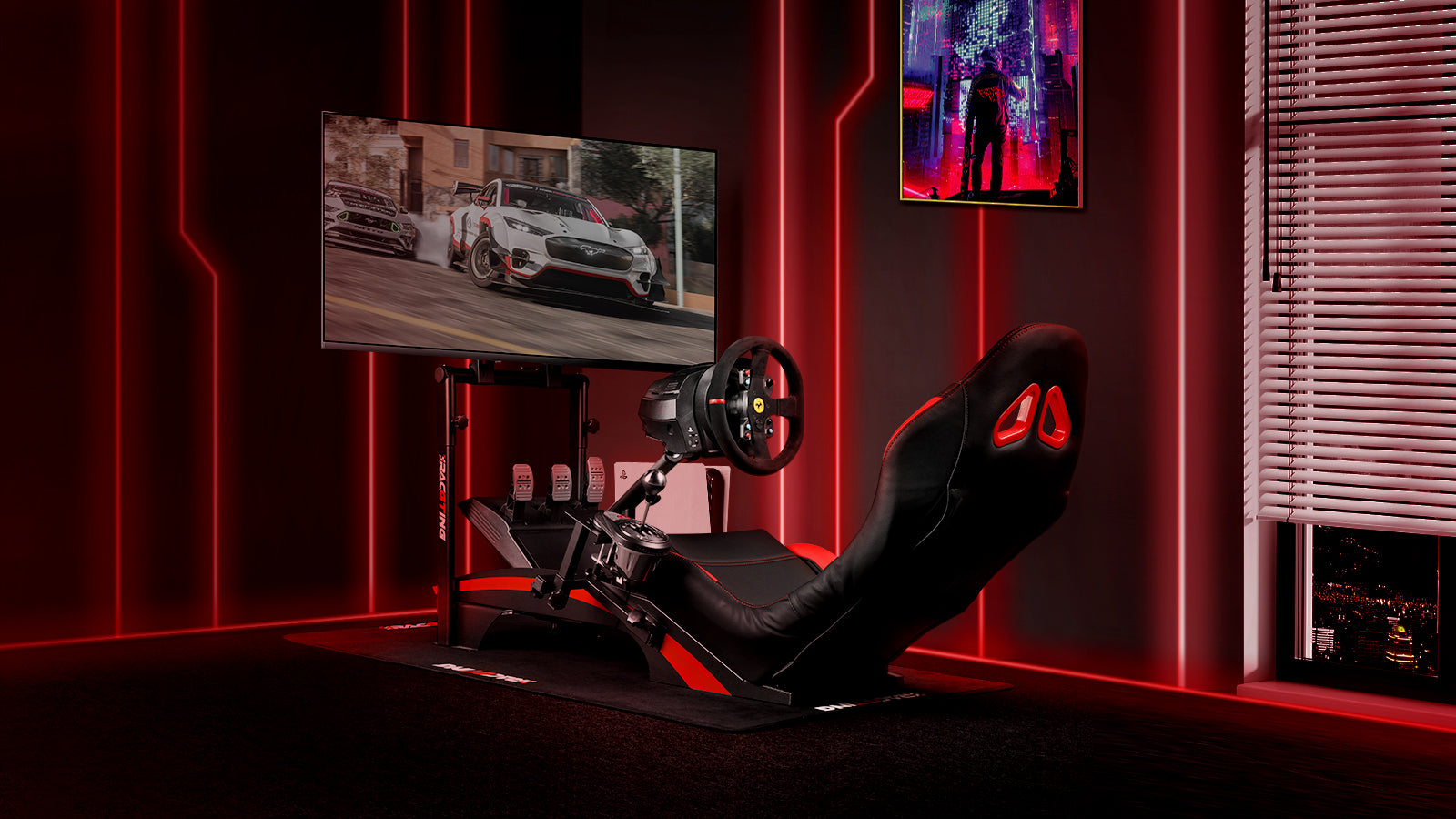Accelerating Realism: The Evolution of Racing Simulators and Steering Wheel Stands
Ever since the inception of video games, racing games have ridden the wave of bringing the thrill of speed and the excitement of competition right into the homes of players. Notably, with the advancement of technology, racing simulators have become increasingly significant in the market. In this article, we’ll delve into the evolution of racing simulators and explore how steering wheel stands have become an integral part of modern gamers’ equipment.
The Development Trajectory of Racing Simulators
In the early 1970s, racing games were simply basic pixel-based games, such as Atari’s “Gran Trak 10” and “Night Driver.” Although these games could provide a simple sense of speed, they were far from the real experience of racing. Fast forward to today, racing simulators have become highly advanced, providing driving experiences that are nearly indistinguishable from real life.
In the 1980s, simulator games started utilizing more refined graphics and physics engines, as seen in “Pole Position.” Entering the 1990s, with the advancement of technology, series like “Gran Turismo” and “Need for Speed” emerged, offering players more sophisticated visual effects and more precise control.
With the popularization of the internet and the development of online multiplayer games, highly realistic racing simulators like “iRacing” appeared, offering online competition experiences comparable to real-world racing events. Currently, the integration of Virtual Reality (VR) technology has further intensified the immersive experience of simulators.
On the market, racing simulators have gradually become an important part of esports, with professional players and enthusiasts investing a considerable amount of time and resources in competition, thereby increasing the influence of this industry day by day.
The Evolutionary Journey of Steering Wheel Stands
The role of steering wheels in racing simulators is indisputable as they enhance the immersion and control felt by players. Early game controllers, despite being full-featured, could not replicate the real feel of driving. This led to the emergence of steering wheel controllers specifically designed for simulation racing games.
In the late '80s and early '90s, steering wheels were often of simple construction with limited functionality and lacked fine feedback. However, over time, manufacturers began to introduce force feedback technology, emulating the driving feel of the real world, with brands like Logitech and Thrustmaster starting to make their mark in the market.
Entering the new millennium, steering wheel stands also saw significant development. They evolved from simple clamping devices to sturdy, professional equipment. Modern steering wheel stands can be adjusted for the player’s height and angle and are designed with simulated cockpits, providing racing game players with a comprehensive real experience.
Nowadays, steering wheel stands and seats, combined with high-quality materials and adjustable settings, can become permanent fixtures in the living room or can be disassembled for storage, saving space efficiently. Many specialized accessories designed for racing game players have also emerged in the market, such as multifunctional stands with pedals and gear shifters.
Conclusion
The development of racing games and related equipment has propelled the gaming experience to new heights. The history of racing simulators shows their stable position in the market and their potential for continuous growth. Meanwhile, steering wheel stands have made the simulation experience all the more realistic, proving their indispensable role as equipment in racing games. With the continuous advancement of technology, the experience of racing games will undoubtedly become even more astonishing.
Whether you’re a passionate esports competitor or simply seeking enjoyment on the weekend, modern racing games and their accessories offer an unparalleled immersive experience for all types of players. And, as simulation technology continues to improve, it is reasonable to believe that future racing games will blur the boundaries between reality and virtuality even further.
A Brief History of Sim Racing reference Link :https://www.handsonperformance.ie/blog/sim-racing-a-brief-history





Share:
The Importance of Racing Steering Wheel Brackets